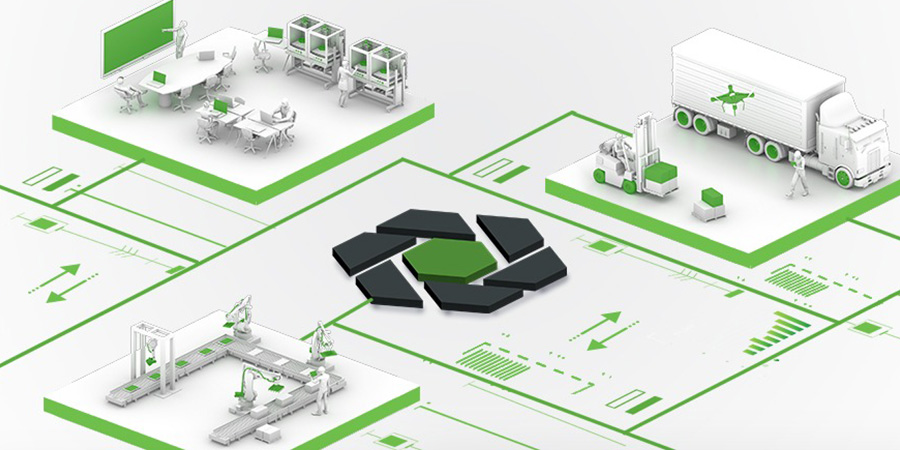Product lifecycle management software allows geographically separated, multi-disciplinary units to strategically collaborate with partners and customers using advanced, updated product data.
Product lifecycle management software (PLM) is the base for the digital thread, producing supply chain coordination and business continuation. Data governance and traceability given by product lifecycle management empowers organizations to drive down expenses, quicker time to market, and achieve the most significant levels of quality and compliance.
Develop a base for a wide variety of new revenue and cost-saving opportunities with PTC Windchill out-of-the-box applications. Seamlessly integrate our PDM & PLM system with ERP, MES, CAD, AR, IoT technologies, and more.
A PTC PLM-enabled structure for discrete manufacturers
For discrete manufacturers, the digital thread starts in the engineering section. This is where mechanical/electronic elements and installed software data is associated with traceability to fundamentals, simulations, certifications, BOMs, process methods, and MBSE. This data, along with its derivatives, requires to be leveraged bi-directionally beyond teams and systems, covering service, manufacturing, IT, and quality, among others.
With a PTC PLM Software system in position, you create the basis for the digital thread and give all necessary stakeholders access to the real-time data they need when they want it.
PTC Windchill -Product lifecycle management capabilities
1. Bill of Materials (BOM) Management
Most manufacturers are engaging with quickness and coordination in the face of increasing numbers of product choices and alternatives. Homegrown tools and methods make it difficult to find and assure traceability and associativity of the outright product data.
By employing a parts-centric approach to managing their bill of supplies, manufacturers can improve collaboration from product design via manufacturing, device connectivity, and field assistance.
2. Change and Configuration Management
The digital data created during a product’s lifecycle is as diverse as those involved. Not only does it endure over different functional systems, it usually develops swiftly.
With PTC PLM Software, you create data governance and associativity to define fully and control all changes and configurations. It makes sure that tasks are given to those qualified using a continuous and automated workflow. Modifications are done, and issues are fixed correctly and efficiently.
3. Manufacturing Process Management
The exponential increase in customer-driven product arrangements needs manufacturers to find more manageable ways of production. Link that with supply chain breaks, developing safety regulations, and time to market influences and the challenges can be difficult. Manufacturing process management (MPM) gives the tools and methods for today’s changing plant-specific manufacturing conditions, all coordinated through PLM. MPM brings the shop floor collectively with engineering, suppliers, logistics, and quality for a more consistent and agile enterprise.
4. Model-Based Systems Engineering (MBSE)
As products become more complicated, various engineering disciplines need to design, develop and sustain them. Developing a system using models facilitates advanced visualization and simulation, developing stakeholder buy-in and customer satisfaction.
Model-based systems engineering allows collaborative, innovative design and preservation of complex systems. It assists organizations in optimizing the management of resources while complying with industry criteria.
5. Product Data Management (PDM)
Product data management software uses software to help businesses combine and deliver product information across the world distributed units where multiple CAD tools may be used.It guarantees that every model, drawing or document is secured and easily found in a central repository. With Product data management software (PDM), you ensure that every version and revision is tracked, required approvals have happened, and manual tasks have been automated with PDM Software.
6. Product Variant Management
Product variety has been the rival of operational performance, confusing methods, adding the potential for inaccuracies, and adding development and quality-related expenses. However, in today’s extremely competitive global marketplace, the capacity to satisfy different customer choices or unique conditions of developing markets is key to income growth.
PLM gives a comprehensive coverage for product variant management, allowing manufacturers to direct for choice. The geometry, the installed software, the different bills of data, and all the configurable logic is performed using a single source of data with department-level performance.
7. Project and Design Collaboration with PTC Windchill
Globalization, outsourcing, and remote work have raised the complexity of project and design collaboration. Internal units—management, engineering, production, sales, retailing, purchasing, and customer service—can be broadly distributed across many offices and time zones. Suppliers and customers are even further removed. PLM project management tools enable project and design collaboration for extended product teams regardless of location.
8. Quality Management with PTC Windchill
Quality management guarantees quality is built into every product and process across the company, including external associates. Quality Management Software offers automated crash mode and forces analysis, enabling closed-loop corrective and preventive actions and detailed root cause analysis (RCA) to spur identification, containment, and analysis of issues and track affected items. Quality Management Software is expected to reach compliance with regulatory obligations and quality measures in most industries. However, the complexities of disbanded teams, disconnected systems, and a dynamic regulatory environment create roadblocks to achieving high-quality products. PTC blends quality management into the PLM process. It allows better control of quality early in the lifecycle, decreasing late-stage changes and decreasing poor quality prices.
9. Requirements Management and Validation
Practical requirements and validation methods are more than just an essential part of expanding and engineering complex products and systems. They are vital to alleviating risk and ensuring customer satisfaction.
With specifications management and validation, you allow teams to designate, define, support, and validate every aspect of the product. It gives end-to-end traceability, built-in change and configuration management, and standards-based collaboration across units, vendors, and supply chains.
10. Service Process Management
PLM Software empowers companies to manage all service information about products, arrangements, and segments. The essential benefit of this product-centric strategy is that it helps companies maximize the reuse of engineering and configuration-specific information. Having a unique source of the fact to the latest service data is critical for professionals to remain productive and active throughout the service lifecycle.







Sumit Sharma
Nice one about PLM software.
Savita Mourya
I found this blog really informative. It was hard for me to miss out on any word or phrase. I haven’t read about PTC Windchill in such a beautiful manner before. Keep the good work!
Numara Sorgula
Thank you for this beautiful article. It’s really a good article
Ankeris Merz
The article is really excellent. Every time I read it, I get information again.
The best article I’ve read in a long time….
Gündem Haberleri
Hello there! This article couldn’t be written much better!
Looking through this article reminds me of my previous roommate!
He always kept preaching about this. I’ll forward this post to him.
Pretty sure he will have a very good read. Thank you for sharing!
Wilson
Kind of like this piece of article. I have been searching about product life cycle management and its advantages and got every answer right here. Thanks.
judi slot online
A big thank you for your blog post.Really thank you! Will read on…